Information and Communication Technologies Used in Precision Agriculture: A Systematic Review
Abstract
1. Introduction
2. Methodology
3. Analysis of the Obtained Results
4. Technical and Administrative Needs Related to Precision Agriculture
4.1. Classification of Farms
- Farms Level 1: These farms lack computer systems for management and agricultural activities. Their operation relies on the experience gained by producers in previous harvests. At this level, the producer cannot assess the process’s financial sustainability, profitability, and productivity. There is a lack of information on whether the farm produces quality products and is financially profitable.
- Farms Level 2: These farms have a certain level of technical implementation using sensors to measure crop conditions. Examples of such devices include soil moisture probes. While there is now some information related to agricultural activities, overall management is still carried out in a traditional manner. The advantage is that there is now more precise data that slightly favors technical decisions related to cultivation.
- Farms Level 3: In these farms, producers have a basic information management system primarily aimed at financial management to determine the profitability of the process. It is common for some information management related to crops for phytosanitary purposes to also occur. This information system is a crucial step towards further advancing farm innovation until reaching what is known as precision agriculture.
- Farms Level 4: These farms continue Level 3 farms, as they complement the information management system with remote control systems for elements that perform processes in the cultivated field, such as water and fertilizer irrigation pumps and environmental variable control in greenhouses.
- Farms Level 5: These farms integrate all the above with a comprehensive monitoring and management system that supports the producer’s decision-making for overall farm and crop management. Mobile applications have been developed for agricultural producers that assist them in monitoring, management, and decision-making. All of this adds value to the producer’s management efforts.
4.2. Traceability and Transparency
4.3. Environmental Impacts Metrics
4.4. Decision Support Tools
4.5. Remote Control of Crops
4.6. Automatic Crop Monitoring
4.7. Automation of Agricultural Processes
4.8. Remote Sensing
4.9. Geographic Information
4.10. Monitoring of Machinery in Crops
4.11. Prediction and Prediction Systems
4.12. Efficiency in the Use of Water and Energy Resources in Cultivation
4.13. Fertilization and Irrigation of Crops
5. Precision Agriculture Technologies Used in Implementations
5.1. Traceability
5.1.1. Integration of Machinery into Cultivation
5.1.2. Scada Systems in Fertilization and Irrigation Activities
5.1.3. Detection of Agricultural Information Through Mobile Equipment
5.1.4. Big Data for Advanced Data Analysis
5.1.5. Environmental Footprints
5.2. Scheme for Obtaining Environmental Footprints
5.2.1. Water Footprint
5.2.2. Decision Support Systems for Farm and Crop Management
5.2.3. Remote Crop Monitoring Systems
5.3. Pumps for Filling and Draining
5.4. Fertilization and Irrigation Control
5.5. Climate Control in Greenhouses
5.6. Carbon Dioxide Control
5.7. Automatable Arbitrary Systems
5.8. Automatic Crop Monitoring Systems
5.8.1. Ambient Temperature Sensors
5.8.2. Ambient Humidity Sensors
5.8.3. Radiation Sensors
5.8.4. Rain Gauges
5.8.5. Wind Speed and Direction Sensors
5.8.6. Plant Sensors
- Dendrometers: These continuously measure the growth values of the plant’s trunk or stem over a specific period. These devices provide information related to the vegetative development of the plants. Keeping an electronic record of such values is convenient because it provides the producer with nutritional information about the plants in the crops.
- Sap Flow Sensors: These sensors continuously measure the sap flow levels along the plant’s stem. The need to electronically record this data provides the producer with information regarding the plant’s nutritional status. This value, combined with the data provided by the dendrometer, establishes an indicator of the level of plant development in the crops.
5.8.7. Soil/Terrain Probes
- Suction: These are instruments that allow solution extraction from the soil. This process provides information about the conditions of the terrain/soil in which the crop has been planted. Its computerized recording is essential because the producer can determine the most suitable area for their plantation to maximize crop yield.
- Nutrition: These instruments measure the levels of nitrate and potassium in the soil. They are usually located around the roots and record the availability of minerals and nutrients for the crop’s plants. Their computerized recording is necessary due to their impact on the crop’s indicators of plant nutrition levels.
- Conductivity, temperature, and humidity: These probes measure electrical conductivity and, thus, record the salinity level of the soil, as well as the moisture level (amount of water) and temperature. In summary, they record the compliance of conditions for plant roots to be nourished by the soil’s conditions.
5.9. Crop Automation Systems
5.10. Remote Sensing Systems
5.10.1. Unmanned Aerial Vehicles (Drones)
5.10.2. Satellite
5.11. Geographic Information Systems
5.12. Systems for Monitoring Agricultural Machinery in the Field
5.13. Computerized Prediction Systems
5.14. Systems for Efficient Use of Water and Energy Resources
5.15. Systems for Fertilization and Irrigation of Crops
5.16. Feasibility and Barriers to Implementation in Colombia
6. Early Warning Systems for Precision Agriculture
7. Conclusions and Future Work
Author Contributions
Funding
Data Availability Statement
Acknowledgments
Conflicts of Interest
References
- Bula, A. Importancia de la Agricultura en el Desarrollo Socio-Económico; Universidad Nacional de Rosario: Santa Fe, Argentina, 2020. [Google Scholar]
- CIMMYT; CIAT. Maize for Colombia: Vision 2030; CIMMYT: Texcoco, Mexico; CIAT: Cali, Colombia, 2019. [Google Scholar]
- Perfetti, J.J.; Balcázar, Á.; Hernández, A.; Leibovich, J. Políticas Para el Desarrollo de la Agricultura en Colombia, 1st ed.; Fedesarrollo: Bogotá, Colombia, 2013. [Google Scholar]
- Arsovski, Z.; Lula, P.; Đorđević, A. Impact of ICT on Quality of Life. In Proceedings of the International Conference on Quality of Life, Kragujevac, Serbia, 9–10 June 2016. [Google Scholar]
- Bankole, F.O.; Shirazi, F.; Brown, I. Investigating the Impact of ICT Investments on Human Development. Electron. J. Inf. Syst. Dev. Ctries. EJISDC 2011, 48, 1–19. [Google Scholar] [CrossRef]
- Gašparović, S. Impact of ICT on Some Segments of Everyday Life of High School Population of the City of Zagreb. IJRAR-Int. J. Res. Anal. Rev. 2019, 6, 62–65. [Google Scholar]
- Hernandez, R.M. Impact of ICT on Education: Challenges and Perspectives. Propósitos Represent. 2017, 5, 325–347. [Google Scholar] [CrossRef]
- Ali, J. Factors Affecting the Adoption of Information and Communication Technologies (ICTs) for Farming Decisions. J. Agric. Food Inf. 2012, 13, 78–96. [Google Scholar] [CrossRef]
- Das, S.; Munshi, M.N.; Kabir, W. The Impact of ICTs on Agricultural Production in Bangladesh: A Study with Food Crops. SAARC J. Agric. 2017, 14, 78–89. [Google Scholar] [CrossRef]
- He, C.; Hao, H.; Su, Y.; Yang, J. A Study on Factors Influencing Farmers’ Adoption of E-Commerce for Agricultural Products: A Case Study of Wuchang City. Sustainability 2024, 16, 9496. [Google Scholar] [CrossRef]
- Marwa, M.E.; Mburu, J.; Oburu, R.E.J.; Mwai, O.; Kahumbu, S. Impact of ICT Based Extension Services on Dairy Production and Household Welfare: The Case of iCow Service in Kenya. J. Agric. Sci. 2020, 12, 141. [Google Scholar] [CrossRef]
- Newase, A.D.; Sheetlani, J.; Sai, S.; Patil, R.D. A Literature Review on Impact of Information and Communication Technology Tools on Rural Society of India. Indian J. Comput. Sci. Eng. IJCSE 2017, 8, 235–240. [Google Scholar]
- Kante, M.; Oboko, R.; Chepken, C. An ICT Model for Increased Adoption of Farm Input Information in Developing Countries: A Case in Sikasso, Mali. Inf. Process. Agric. 2019, 6, 26–46. [Google Scholar] [CrossRef]
- Habanyati, E.J.; Paramasivam, S.; Seethapathy, P.; Manalil, S. Assessing Organic Farming Adoption in Selected Districts of Tamil Nadu: Challenges, Practices, and Pathways for Growth. Agronomy 2024, 14, 2537. [Google Scholar] [CrossRef]
- Minagricultura. Un Campo para la Equidad: Política Agropecuaria y de Desarrollo; Ministerio de Agricultura y Desarrollo Rural (Minagricultura): Bogotá, Colombia, 2018. [Google Scholar]
- Parra-Peña, R.; Puyana, R.; Yepes-Chica, F. Análisis de la Productividad del Sector Agropecuario en Colombia y su Impacto en Temas como: Encadenamientos Productivos, Sostenibilidad e Internacionalización, en el Marco del Programa Colombia Más Competitiva; Fedesarrollo: Bogotá, Colombia, 2021. [Google Scholar]
- UNGRD. Sistema de Alerta Temprana. Available online: http://portal.gestiondelriesgo.gov.co/Paginas/SAT.aspx (accessed on 3 October 2024).
- Mohammad El-Basioni, B.M.; Abd El-Kader, S.M. Laying the Foundations for an IoT Reference Architecture for Agricultural Application Domain. IEEE Access 2020, 8, 190194–190230. [Google Scholar] [CrossRef]
- Dobrescu, R.; Merezeanu, D.; Mocanu, S. Context-Aware Control and Monitoring System with IoT and Cloud Support. Comput. Electron. Agric. 2019, 160, 91–99. [Google Scholar] [CrossRef]
- Bouachir, W.; Ihou, K.E.; Gueziri, H.E.; Bouguila, N.; Belanger, N. Computer Vision System for Automatic Counting of Planting Microsites Using UAV Imagery. IEEE Access 2019, 7, 82491–82500. [Google Scholar] [CrossRef]
- Liu, L.; Wang, R.; Xie, C.; Yang, P.; Wang, F.; Sudirman, S.; Liu, W. PestNet: An End-to-End Deep Learning Approach for Large-Scale Multi-Class Pest Detection and Classification. IEEE Access 2019, 7, 45301–45312. [Google Scholar] [CrossRef]
- Oussous, A.; Benjelloun, F.Z.; Ait Lahcen, A.; Belfkih, S. Big Data Technologies: A Survey. J. King Saud Univ.—Comput. Inf. Sci. 2018, 30, 431–448. [Google Scholar] [CrossRef]
- Amanullah, M.A.; Habeeb, R.A.A.; Nasaruddin, F.H.; Gani, A.; Ahmed, E.; Nainar, A.S.M.; Akim, N.M.; Imran, M. Deep Learning and Big Data Technologies for IoT Security. Comput. Commun. 2020, 151, 495–517. [Google Scholar] [CrossRef]
- Khan, M.A.; Salah, K. IoT Security: Review, Blockchain Solutions, and Open Challenges. Future Gener. Comput. Syst. 2018, 82, 395–411. [Google Scholar] [CrossRef]
- Mohamad Noor, M.B.; Hassan, W.H. Current Research on Internet of Things (IoT) Security: A Survey. Comput. Netw. 2019, 148, 283–294. [Google Scholar] [CrossRef]
- Sidhu, S.; Mohd, B.J.; Hayajneh, T. Hardware Security in IoT Devices with Emphasis on Hardware Trojans. J. Sens. Actuator Netw. 2019, 8, 42. [Google Scholar] [CrossRef]
- Bhatia, G.; Joshi, N.; Iyengar, S.; Rajpal, S.; Mahadevan, K. Crop Prediction Based on Environmental Conditions and Disease Prediction. Smart Innov. Syst. Technol. 2021, 195, 335–344. [Google Scholar] [CrossRef]
- de la Casa, A.; Ovando, G.; Bressanini, L.; Martínez, J.; Díaz, G.; Miranda, C. Soybean Crop Coverage Estimation from NDVI Images with Different Spatial Resolution to Evaluate Yield Variability in a Plot. ISPRS J. Photogramm. Remote Sens. 2018, 146, 531–547. [Google Scholar] [CrossRef]
- Vahidi, M.; Shafian, S.; Frame, W.H. Precision Soil Moisture Monitoring Through Drone-Based Hyperspectral Imaging and PCA-Driven Machine Learning. Sensors 2025, 25, 782. [Google Scholar] [CrossRef] [PubMed]
- Miller, G.A.; Hyslop, J.J.; Barclay, D.; Edwards, A.; Thomson, W.; Duthie, C.A. Using 3D Imaging and Machine Learning to Predict Liveweight and Carcass Characteristics of Live Finishing Beef Cattle. Front. Sustain. Food Syst. 2019, 3, 30. [Google Scholar] [CrossRef]
- Bwambale, E.; Wanyama, J.; Adongo, T.A.; Umukiza, E.; Ntole, R.; Chikavumbwa, S.R.; Sibale, D.; Jeremaih, Z. A Review of Model Predictive Control in Precision Agriculture. Smart Agric. Technol. 2025, 10, 100716. [Google Scholar] [CrossRef]
- Vergara-Díaz, O.; Kefauver, S.; Araus, J.L.; Aranjuelo, I. Development of Novel Technological Approaches for a Reliable Crop Characterization Under Changing Environmental Conditions. NIR News 2020, 31, 14–19. [Google Scholar] [CrossRef]
- Flynn, K.C.; Witt, T.W.; Baath, G.S.; Chinmayi, H.K.; Smith, D.R.; Gowda, P.H.; Ashworth, A.J. Hyperspectral Reflectance and Machine Learning for Multi-Site Monitoring of Cotton Growth. Smart Agric. Technol. 2024, 9, 100536. [Google Scholar] [CrossRef]
- Schlosser, J.F.; de Farias, M.S.; Bertollo, G.M.; Russini, A.; Herzog, D.; Casali, L. Agricultural Tractor Engines from the Perspective of Agriculture 4.0. Rev. Cienc. Agron. 2020, 51, e20207716. [Google Scholar] [CrossRef]
- Sánchez-Quispe, S.T.; Madrigal, J.; Rodríguez-Licea, D.; Domínguez-Mota, F.J.; Domínguez-Sánchez, C.; Lara-Ledesma, B. Development of a Low-Cost Automated Hydrological Information System for Remote Areas in Morelia, Mexico. Water 2023, 15, 3888. [Google Scholar] [CrossRef]
- Martin, G.; Moraine, M.; Ryschawy, J.; Duru, M.; Therond, O.; Duchene, O.; Schaller, N.; Bergez, J.E. Crop–livestock integration beyond the farm level: A review. Agron. Sustain. Dev. 2016, 36, 53. [Google Scholar] [CrossRef]
- Haleem, A.; Khan, S.; Khan, M.I. Traceability Implementation in Food Supply Chain: A Grey-DEMATEL Approach. Inf. Process. Agric. 2019, 6, 335–348. [Google Scholar] [CrossRef]
- Tranchina, M.; Reubens, B.; Frey, M.; De Cannière, C.; Van Meerbeek, K. What Challenges Impede the Adoption of Agroforestry Practices? A Global Perspective through a Systematic Literature Review. Agroforest. Syst. 2024, 98, 1817–1837. [Google Scholar] [CrossRef]
- Purwandoko, P.B.; Seminar, K.B.; Sutrisno; Sugiyanta. Development of a Smart Traceability System for the Rice Agroindustry Supply Chain in Indonesia. Information 2019, 10, 288. [Google Scholar] [CrossRef]
- Oliveira, J.; Lima, J.E.; da Silva, D.; Kuprych, V.; Faria, P.M.; Teixeira, C.; Ferreira Cruz, E.; Rosado da Cruz, A.M. Traceability System for Quality Monitoring in the Fishery and Aquaculture Value Chain. J. Agric. Food Res. 2021, 5, 100169. [Google Scholar] [CrossRef]
- Kim, Y.G.; Woo, E. Consumer Acceptance of a Quick Response (QR) Code for the Food Traceability System: Application of an Extended Technology Acceptance Model (TAM). Food Res. Int. 2016, 85, 266–272. [Google Scholar] [CrossRef] [PubMed]
- Qian, J.; Xing, B.; Zhang, B.; Yang, H. Optimizing QR Code Readability for Curved Agro-Food Packages Using Response Surface Methodology to Improve Mobile Phone-Based Traceability. Food Packag. Shelf Life 2021, 28, 100638. [Google Scholar] [CrossRef]
- Tarjan, L.; Šenk, I.; Tegeltija, S.; Stankovski, S.; Ostojic, G. A Readability Analysis for QR Code Application in a Traceability System. Comput. Electron. Agric. 2014, 109, 1–11. [Google Scholar] [CrossRef]
- Payraudeau, S.; van der Werf, H.M.G. Environmental Impact Assessment for a Farming Region: A Review of Methods. Agric. Ecosyst. Environ. 2005, 107, 1–19. [Google Scholar] [CrossRef]
- Tullo, E.; Finzi, A.; Guarino, M. Review: Environmental Impact of Livestock Farming and Precision Livestock Farming as a Mitigation Strategy. Sci. Total Environ. 2019, 650, 2751–2760. [Google Scholar] [CrossRef]
- Tuomisto, H.L.; Hodge, I.D.; Riordan, P.; Macdonald, D.W. Does Organic Farming Reduce Environmental Impacts?—A Meta-Analysis of European Research. J. Environ. Manag. 2012, 112, 309–320. [Google Scholar] [CrossRef]
- Ledgard, S.F.; Falconer, S.J.; Abercrombie, R.; Philip, G.; Hill, J.P. Temporal, Spatial, and Management Variability in the Carbon Footprint of New Zealand Milk. J. Dairy Sci. 2020, 103, 1031–1046. [Google Scholar] [CrossRef]
- Loyarte-López, E.; Barral, M.; Morla, J.C. Methodology for Carbon Footprint Calculation Towards Sustainable Innovation in Intangible Assets. Sustainability 2020, 12, 1629. [Google Scholar] [CrossRef]
- Wood, R.; Neuhoff, K.; Moran, D.; Simas, M.; Grubb, M.; Stadler, K. The Structure, Drivers and Policy Implications of the European Carbon Footprint. Clim. Policy 2020, 20 (Suppl. S1), S39–S57. [Google Scholar] [CrossRef]
- Forin, S.; Mikosch, N.; Berger, M.; Finkbeiner, M. Organizational Water Footprint: A Methodological Guidance. Int. J. Life Cycle Assess. 2020, 25, 403–422. [Google Scholar] [CrossRef]
- Jackson, N.; Konar, M.; Hoekstra, A.Y. The Water Footprint of Food Aid. Sustainability 2015, 7, 6435. [Google Scholar] [CrossRef]
- Konar, M.; Marston, L. The Water Footprint of the United States. Water 2020, 12, 3286. [Google Scholar] [CrossRef]
- Danish; Ulucak, R.; Khan, S.U.D. Determinants of the Ecological Footprint: Role of Renewable Energy, Natural Resources, and Urbanization. Sustain. Cities Soc. 2020, 54, 101996. [Google Scholar] [CrossRef]
- Lin, D.; Hanscom, L.; Murthy, A.; Galli, A.; Evans, M.; Neill, E.; Mancini, M.S.; Martindill, J.; Medouar, F.Z.; Huang, S.; et al. Ecological Footprint Accounting for Countries: Updates and Results of the National Footprint Accounts, 2012–2018. Resources 2018, 7, 58. [Google Scholar] [CrossRef]
- Syrovátka, M. On Sustainability Interpretations of the Ecological Footprint. Ecol. Econ. 2020, 169, 106543. [Google Scholar] [CrossRef]
- Lovas, R.; Koplanyi, K.; Elo, G. Agrodat: A Knowledge Centre and Decision Support System for Precision Farming Based on IoT and Big Data Technologies. Ercim News 2018, 113, 22–23. [Google Scholar]
- Singh, H.; Sharma, N. Decision Support System for Precision Farming. Int. J. Comput. Technol. 2013, 4, 76–81. [Google Scholar] [CrossRef]
- Hristov, I.; Chirico, A. The Role of Sustainability Key Performance Indicators (KPIs) in Implementing Sustainable Strategies. Sustainability 2019, 11, 5742. [Google Scholar] [CrossRef]
- Karl, A.A.; Micheluzzi, J.; Leite, L.R.; Pereira, C.R. Supply Chain Resilience and Key Performance Indicators: A Systematic Literature Review. Production 2018, 28, e20180020. [Google Scholar] [CrossRef]
- Purwanto, A. A Systematic Literature Review of Implementation Key Performance Indicators (KPIs). J. Ind. Eng. Manag. Res. JIEMAR 2020, 1, 200–208. [Google Scholar]
- Scheepmaker, G.M.; Willeboordse, H.Y.; Hoogenraad, J.H.; Luijt, R.S.; Goverde, R.M.P. Comparing Train Driving Strategies on Multiple Key Performance Indicators. J. Rail Transp. Plan. Manag. 2020, 13, 100163. [Google Scholar] [CrossRef]
- Cambra Baseca, C.; Sendra, S.; Lloret, J.; Tomas, J. A Smart Decision System for Digital Farming. Agronomy 2019, 9, 216. [Google Scholar] [CrossRef]
- Padhiary, M.; Saha, D.; Kumar, R.; Sethi, L.N.; Kumar, A. Enhancing Precision Agriculture: A Comprehensive Review of Machine Learning and AI Vision Applications in All-Terrain Vehicles for Farm Automation. Smart Agric. Technol. 2024, 8, 100483. [Google Scholar] [CrossRef]
- Hudaya, R.; Putro, T.Y. Perancangan Konfigurasi Sensor Node dalam Digital Precision Farming Menggunakan Jaringan Internet of Things. In Proceedings of the 9th Industrial Research Workshop and National Seminar, Bandung, Indonesia, 25–26 July 2018. [Google Scholar]
- Rogachev, A.; Melikhova, E. SCADA and GIS Systems for Monitoring and Managing Digital Objects of Agro-Industrial Production. In Proceedings of the XIII International Scientific Conference on Architecture and Construction 2020; Lecture Notes in Civil Engineering; Springer: Singapore, 2021; Volume 130. [Google Scholar] [CrossRef]
- Dong, Y.; Xu, F.; Liu, L.; Du, X.; Ren, B.; Guo, A.; Geng, Y.; Ruan, C.; Ye, H.; Huang, W.; et al. Automatic System for Crop Pest and Disease Dynamic Monitoring and Early Forecasting. IEEE J. Sel. Top. Appl. Earth Obs. Remote Sens. 2020, 13, 4410–4418. [Google Scholar] [CrossRef]
- Sathish Kumar, B.; Subitha, D.; Baskar, R. Automatic Crop Monitoring System Using Bluetooth Module. Int. J. Control. Autom. 2020, 13, 43–49. [Google Scholar]
- Tech, M. Automatic Crop Monitoring Using Embedded System. Int. Res. J. Eng. Technol. IRJET 2017, 4, 651–657. [Google Scholar]
- ISO 12188-2:2012; Tractors and Machinery for Agriculture and Forestry—Test Procedures for Positioning and Guidance Systems in Agriculture—Part 2: Testing of Satellite-Based Auto-Guidance Systems during Straight and Level Travel. International Organization for Standardization (ISO): Geneva, Switzerland, 2012.
- Kashyap, C.; Kashyap, B.Y.; Guruprasad, K.; Shrinivasa, D.; Shrivastava, P.K. Recent Development of Automation and IoT in Agriculture. Int. J. Recent Technol. Eng. 2019, 8. [Google Scholar] [CrossRef]
- Rotz, S.; Gravely, E.; Mosby, I.; Duncan, E.; Finnis, E.; Horgan, M.; LeBlanc, J.; Martin, R.; Neufeld, H.T.; Nixon, A.; et al. Automated Pastures and the Digital Divide: How Agricultural Technologies Are Shaping Labour and Rural Communities. J. Rural. Stud. 2019, 68, 112–122. [Google Scholar] [CrossRef]
- Valecce, G.; Strazzella, S.; Radesca, A.; Grieco, L.A. Solarfertigation: Internet of Things Architecture for Smart Agriculture. In Proceedings of the 2019 IEEE International Conference on Communications Workshops (ICC Workshops), Shanghai, China, 20–24 May 2019; p. 8756735. [Google Scholar] [CrossRef]
- Kounalakis, T.; Triantafyllidis, G.A.; Nalpantidis, L. Deep Learning-Based Visual Recognition of Rumex for Robotic Precision Farming. Comput. Electron. Agric. 2019, 165, 104973. [Google Scholar] [CrossRef]
- Pretto, A.; Aravecchia, S.; Burgard, W.; Chebrolu, N.; Dornhege, C.; Falck, T.; Fleckenstein, F.V.; Fontenla, A.; Imperoli, M.; Khanna, R.; et al. Building an Aerial-Ground Robotics System for Precision Farming: An Adaptable Solution. IEEE Robot. Autom. Mag. 2021, 28, 29–49. [Google Scholar] [CrossRef]
- Ipate, G.; Voicu, G.; Dinu, I. Research on the Use of Drones in Precision Agriculture. UPB Sci. Bull. Ser. D Mech. Eng. 2015, 77. [Google Scholar]
- Natu, A.S. Adoption and Utilization of Drones for Advanced Precision Farming: A Review. Int. J. Recent Innov. Trends Comput. Commun. 2016, 4, 1–12. [Google Scholar]
- Unal, I.; Topakci, M. A Review on Using Drones for Precision Farming Applications. Int. J. Adv. Robot. Syst. 2015. [Google Scholar]
- Yan, X.-T.; Bianco, A.; Niu, C.; Palazzetti, R.; Henry, G.; Li, Y.; Tubby, W.; Kisdi, A.; Irshad, R.; Sanders, S.; et al. The AgriRover: A Reinvented Mechatronic Platform from Space Robotics for Precision Farming. In Reinventing Mechatronics; Yan, X.T., Bradley, D., Russell, D., Moore, P., Eds.; Springer: Cham, Switzerland, 2020. [Google Scholar] [CrossRef]
- Beluhova-Uzunova, R.; Dunchev, D. Precision Farming—Concepts and Perspectives. Probl. Agric. Econ. 2019, 360. [Google Scholar] [CrossRef]
- Georgi, C.; Spengler, D.; Itzerott, S.; Kleinschmit, B. Automatic Delineation Algorithm for Site-Specific Management Zones Based on Satellite Remote Sensing Data. Precis. Agric. 2018, 19, 684–707. [Google Scholar] [CrossRef]
- Yang, C. High Resolution Satellite Imaging Sensors for Precision Agriculture. Front. Agric. Sci. Eng. 2018, 5, 393–405. [Google Scholar] [CrossRef]
- Goodchild, M.F. Geographic Information Systems and Science: Today and Tomorrow. Ann. GIS 2009, 15, 3–9. [Google Scholar] [CrossRef]
- Liu, X.; Wang, X.; Wright, G.; Cheng, J.C.P.; Li, X.; Liu, R. A State-of-the-Art Review on the Integration of Building Information Modeling (BIM) and Geographic Information System (GIS). ISPRS Int. J. Geo-Inf. 2017, 6, 53. [Google Scholar] [CrossRef]
- Lü, G.; Batty, M.; Strobl, J.; Lin, H.; Zhu, A.X.; Chen, M. Reflections and Speculations on the Progress in Geographic Information Systems (GIS): A Geographic Perspective. Int. J. Geogr. Inf. Sci. 2019, 3, 346–3673. [Google Scholar] [CrossRef]
- Fabrizio, E.; Biglia, A.; Branciforti, V.; Filippi, M.; Barbero, S.; Tecco, G.; Mollo, P.; Molino, A. Monitoring of a Micro-Smart Grid: Power Consumption Data of Some Machineries of an Agro-Industrial Test Site. Data Brief 2017, 10, 564–568. [Google Scholar] [CrossRef][Green Version]
- Vuran, M.C.; Salam, A.; Wong, R.; Irmak, S. Internet of Underground Things in Precision Agriculture: Architecture and Technology Aspects. Ad Hoc Netw. 2018, 81, 160–173. [Google Scholar] [CrossRef]
- Zhang, Y.; Chen, D.; Wang, S.; Tian, L. A Promising Trend for Field Information Collection: An Air-Ground Multi-Sensor Monitoring System. Inf. Process. Agric. 2018, 5, 224–233. [Google Scholar] [CrossRef]
- Bendre, M.R.; Thool, R.C.; Thool, V.R. Big Data in Precision Agriculture: Weather Forecasting for Future Farming. In Proceedings of the 2015 1st International Conference on Next Generation Computing Technologies (NGCT), Dehradun, India, 4–5 September 2015. [Google Scholar] [CrossRef]
- Sharma, A.; Vijayakumar, V. Predictive Analytics in Weather Forecasting Using Machine Learning Algorithms. EAI Endorsed Trans. Cloud Syst. 2019, 5, 1. [Google Scholar] [CrossRef]
- Visser, O.; Sippel, S.R.; Thiemann, L. Imprecision Farming? Examining the (In)Accuracy and Risks of Digital Agriculture. J. Rural. Stud. 2021, 86, 623–632. [Google Scholar] [CrossRef]
- Fan, X.; Zhang, W.; Chen, W.; Chen, B. Land–Water–Energy Nexus in Agricultural Management for Greenhouse Gas Mitigation. Appl. Energy 2020, 265, 114796. [Google Scholar] [CrossRef]
- Jensen, T.A.; Antille, D.L.; Tullberg, J.N. Improving On-Farm Energy Use Efficiency by Optimizing Machinery Operations and Management: A Review. Agric. Res. 2025, 14, 15–33. [Google Scholar] [CrossRef]
- Zou, H.; Fan, J.; Zhang, F.; Xiang, Y.; Wu, L.; Yan, S. Optimization of Drip Irrigation and Fertilization Regimes for High Grain Yield, Crop Water Productivity, and Economic Benefits of Spring Maize in Northwest China. Agric. Water Manag. 2020, 230, 105986. [Google Scholar] [CrossRef]
- Patelli, N.; Mandrioli, M. Blockchain Technology and Traceability in the Agrifood Industry. J. Food Sci. 2020, 85, 3670–3678. [Google Scholar] [CrossRef] [PubMed]
- Demestichas, K.; Peppes, N.; Alexakis, T.; Adamopoulou, E. Blockchain in Agriculture Traceability Systems: A Review. Appl. Sci. 2020, 10, 4113. [Google Scholar] [CrossRef]
- Behnke, K.; Janssen, M.F.W.H.A. Boundary Conditions for Traceability in Food Supply Chains Using Blockchain Technology. Int. J. Inf. Manag. 2020, 52, 101969. [Google Scholar] [CrossRef]
- Bosona, T.; Gebresenbet, G. The Role of Blockchain Technology in Promoting Traceability Systems in Agri-Food Production and Supply Chains. Sensors 2023, 23, 5342. [Google Scholar] [CrossRef]
- Cao, S.; Xu, H.; Bryceson, K.P. Blockchain Traceability for Sustainability Communication in Food Supply Chains: An Architectural Framework, Design Pathway and Considerations. Sustainability 2023, 15, 13486. [Google Scholar] [CrossRef]
- Pullo, S.; Pareschi, R.; Piantadosi, V.; Salzano, F.; Carlini, R. Integrating IOTA’s Tangle with the Internet of Things for Sustainable Agriculture: A Proof-of-Concept Study on Rice Cultivation. Informatics 2024, 11, 3. [Google Scholar] [CrossRef]
- El Hajji, M.; Es-saady, Y.; Ait Addi, M.; Antari, J. Optimization of Agrifood Supply Chains Using Hyperledger Fabric Blockchain Technology. Comput. Electron. Agric. 2024, 227, 109503. [Google Scholar] [CrossRef]
- Bauer, J.; Helmke, R.; Bothe, A.; Aschenbruck, N. CAN’t Track Us: Adaptable Privacy for ISOBUS Controller Area Networks. Comput. Stand. Interfaces 2019, 66, 103344. [Google Scholar] [CrossRef]
- Fountas, S.; Sorensen, C.G.; Tsiropoulos, Z.; Cavalaris, C.; Liakos, V.; Gemtos, T. Farm Machinery Management Information System. Comput. Electron. Agric. 2015, 110, 131–138. [Google Scholar] [CrossRef]
- Marcon Zago, G.; Pignaton De Freitas, E. A Quantitative Performance Study on CAN and CAN FD Vehicular Networks. IEEE Trans. Ind. Electron. 2018, 65, 4413–4422. [Google Scholar] [CrossRef]
- Paraforos, D.S.; Sharipov, G.M.; Griepentrog, H.W. ISO 11783-Compatible Industrial Sensor and Control Systems and Related Research: A Review. Comput. Electron. Agric. 2019, 163, 104863. [Google Scholar] [CrossRef]
- Silva-Díaz, L.; Hernández-López, Y.; Vázquez-Peña, A.; Pérez-Acosta, O.; Pérez-Torres, D. Design of an Automation System for the Silage Plant “Héctor Molina”. Rev. Cienc. Téc. Agropecu. 2017, 26, 109–120. [Google Scholar]
- Brandoli, B.; Spadon, G.; Esau, T.; Hennessy, P.; Carvalho, A.C.P.L.; Amer-Yahia, S.; Rodrigues-Jr, J.F. DropLeaf: A Precision Farming Smartphone Tool for Real-Time Quantification of Pesticide Application Coverage. Comput. Electron. Agric. 2021, 180, 105906. [Google Scholar] [CrossRef]
- Mendes, J.; Pinho, T.M.; dos Santos, F.N.; Sousa, J.J.; Peres, E.; Boaventura-Cunha, J.; Cunha, M.; Morais, R. Smartphone Applications Targeting Precision Agriculture Practices—A Systematic Review. Agronomy 2020, 10, 855. [Google Scholar] [CrossRef]
- Lokhorst, C.; de Mol, R.M.; Kamphuis, C. Invited Review: Big Data in Precision Dairy Farming. Animal 2019, 13, 1519–1528. [Google Scholar] [CrossRef]
- FAO. Digital Agriculture: Overview, Key Issues and Policy Responses; Food and Agriculture Organization of the United Nations: Rome, Italy, 2021; Available online: https://www.fao.org/3/cb3516en/cb3516en.pdf (accessed on 8 April 2025).
- ICAR. ICAR’s Digital Agriculture Initiatives and Technologies; Indian Council of Agricultural Research: New Delhi, India, 2021; Available online: https://icar.org.in/content/digital-agriculture-initiatives (accessed on 8 April 2025).
- Israel Innovation Authority. AgTech Israel: The Landscape 2023; Israel Innovation Authority: Tel Aviv, Israel, 2023; Available online: https://innovationisrael.org.il/en/report/agtech-2023 (accessed on 8 April 2025).
- ISO 14046:2014; Environmental Management—Water Footprint—Principles, Requirements and Guidelines. International Organization for Standardization (ISO): Geneva, Switzerland, 2014.
- Anderson, R.G.; French, A.N. Crop Evapotranspiration. Agronomy 2019, 9, 614. [Google Scholar] [CrossRef]
- Miralles, D.G.; Brutsaert, W.; Dolman, A.J.; Gash, J.H. On the Use of the Term “Evapotranspiration”. Water Resour. Res. 2020, 56, e2020WR028055. [Google Scholar] [CrossRef]
- Xiang, K.; Li, Y.; Horton, R.; Feng, H. Similarity and Difference of Potential Evapotranspiration and Reference Crop Evapotranspiration—A Review. Agric. Water Manag. 2020, 232, 106043. [Google Scholar] [CrossRef]
- Petraki, D.; Gazoulis, I.; Kokkini, M.; Danaskos, M.; Kanatas, P.; Rekkas, A.; Travlos, I. Digital Tools and Decision Support Systems in Agroecology: Benefits, Challenges, and Practical Implementations. Agronomy 2025, 15, 236. [Google Scholar] [CrossRef]
- Gázquez, J.A.; Castellano, N.N.; Manzano-Agugliaro, F. Intelligent Low Cost Telecontrol System for Agricultural Vehicles in Harmful Environments. J. Clean. Prod. 2016, 113, 204–215. [Google Scholar] [CrossRef]
- Oviedo, I.D.; Altamirano, C.A.; Millan, M.E.; Arreaga, N.X.; Padilla, V.S. Development of a Prototype of an Automatic System for Shrimp Farming Using Telecontrol as a Viable Proposal for Small Producers. In Proceedings of the 2017 European Conference on Electrical Engineering and Computer Science (EECS), Bern, Switzerland, 17–19 November 2017. [Google Scholar] [CrossRef]
- Stambouli, T.; Zapata, N.; Faci, J.M. Irrigation Patterns and Scheduling of a Telecontrolled Irrigation District in Northeastern Spain. J. Irrig. Drain. Eng. 2012, 138, 503–516. [Google Scholar] [CrossRef]
- Sayyed, A.; Aziz, M. Towards an Autonomous and Smart Water Tank System. Int. J. Emerg. Trends Eng. Res. 2021, 9. [Google Scholar] [CrossRef]
- Vahida, S.; Srinivas, R.; Shabuddin, S. Irrigation Made Easy: Block Wise Filling of Farm Field Using WSN System. Int. J. Sci. Technol. Res. 2020, 9, 1780–1783. [Google Scholar]
- Amin, A.; Mubeen, M.; Mohkum Hammad, H.; Nasim Jatoi, W. Climate Smart Agriculture: An Approach for Sustainable Food Security. Agric. Res. Commun. 2015, 2, 13–21. [Google Scholar]
- Ahmed, F.; Ahsani, V.; Nazeri, K.; Marzband, E.; Bradley, C.; Toyserkani, E.; Jun, M.B.G. Monitoring of Carbon Dioxide Using Hollow-Core Photonic Crystal Fiber Mach–Zehnder Interferometer. Sensors 2019, 19, 3357. [Google Scholar] [CrossRef]
- Okpara, C.R.; Idigo, V.E.; Oguchienti, S.M. Wireless Sensor Networks for Environmental Monitoring: A Review. Int. J. Eng. Trends Technol. 2020, 68, 68–71. [Google Scholar] [CrossRef]
- Wang, Y.; Jia, Y.; Chen, Q.; Wang, Y. A Passive Wireless Temperature Sensor for Harsh Environment Applications. Sensors 2008, 8, 982. [Google Scholar] [CrossRef]
- Duan, Z.; Jiang, Y.; Yan, M.; Wang, S.; Yuan, Z.; Zhao, Q.; Sun, P.; Xie, G.; Du, X.; Tai, H. Facile, Flexible, Cost-Saving, and Environment-Friendly Paper-Based Humidity Sensor for Multifunctional Applications. ACS Appl. Mater. Interfaces 2019, 11, 21840–21849. [Google Scholar] [CrossRef]
- Toshima, K. Component Technology Development of Thermal Absolute Humidity Sensor for High Humidity and Condensation Environments. Electron. Commun. Jpn. 2018, 101, 45–51. [Google Scholar] [CrossRef]
- Gitelson, A.; Arkebauer, T.; Viña, A.; Skakun, S.; Inoue, Y. Evaluating Plant Photosynthetic Traits via Absorption Coefficient in the Photosynthetically Active Radiation Region. Remote Sens. Environ. 2021, 258, 112401. [Google Scholar] [CrossRef]
- Zhou, T.M.; Wu, Z.; Wang, Y.C.; Su, X.J.; Qin, C.X.; Huo, H.Q.; Jiang, F.L. Modelling Seedling Development Using Thermal Effectiveness and Photosynthetically Active Radiation. J. Integr. Agric. 2019, 18, 2521–2533. [Google Scholar] [CrossRef]
- Cecinati, F.; Moreno-Ródenas, A.M.; Rico-Ramirez, M.A.; ten Veldhuis, M.C.; Langeveld, J.G. Considering Rain Gauge Uncertainty Using Kriging for Uncertain Data. Atmosphere 2018, 9, 446. [Google Scholar] [CrossRef]
- Ochoa-Rodriguez, S.; Wang, L.P.; Willems, P.; Onof, C. A Review of Radar-Rain Gauge Data Merging Methods and Their Potential for Urban Hydrological Applications. Water Resour. Res. 2019, 55, 6356–6391. [Google Scholar] [CrossRef]
- Padrón, R.S.; Feyen, J.; Córdova, M.; Crespo, P.; Célleri, R. Rain Gauge Inter-comparison Quantifies Differences in Precipitation Monitoring. Granja 2020, 31, 7–20. [Google Scholar] [CrossRef]
- Chen, C.S.; Chen, W.C. Research and Development of Automatic Monitoring System for Livestock Farms. Appl. Sci. 2019, 9, 1132. [Google Scholar] [CrossRef]
- Kumhálová, J.; Matějková, Š. Yield Variability Prediction by Remote Sensing Sensors with Different Spatial Resolution. Int. Agrophysics 2017, 31, 195–202. [Google Scholar] [CrossRef][Green Version]
- Yao, L.; Wang, Q.; Yang, J.; Zhang, Y.; Zhu, Y.; Cao, W.; Ni, J. UAV-Borne Dual-Band Sensor Method for Monitoring Physiological Crop Status. Sensors 2019, 19, 816. [Google Scholar] [CrossRef]
- Hoffmann, M.; Fennimore, S.A. A Soil Probe System to Evaluate Weed Seed Survival in Soil Disinfestation Trials. Weed Technol. 2017, 31, 752–760. [Google Scholar] [CrossRef]
- Holzman, M.; Rivas, R.; Carmona, F.; Niclòs, R. A Method for Soil Moisture Probes Calibration and Validation of Satellite Estimates. MethodsX 2017, 4, 243–249. [Google Scholar] [CrossRef]
- Roscioli, J.R.; Meredith, L.K.; Shorter, J.H.; Gil-Loaiza, J.; Volkmann, T.H.M. Soil Gas Probes for Monitoring Trace Gas Messengers of Microbial Activity. Sci. Rep. 2021, 11, 8327. [Google Scholar] [CrossRef]
- Montes, H.; Ribeiro, A. Automation in Agriculture. In Encyclopedia of Smart Agriculture Technologies; Zhang, Q., Ed.; Springer: Cham, Switzerland, 2023. [Google Scholar] [CrossRef]
- Kumar, S.; Meena, R.S.; Sheoran, S.; Jangir, C.K.; Jhariya, M.K.; Banerjee, A.; Raj, A. Remote Sensing for Agriculture and Resource Management. In Natural Resources Conservation and Advances for Sustainability; Jhariya, M.K., Meena, R.S., Banerjee, A., Meena, S.N., Eds.; Elsevier: Amsterdam, The Netherlands, 2022; pp. 91–135. [Google Scholar] [CrossRef]
- Maes, W.H. Practical Guidelines for Performing UAV Mapping Flights with Snapshot Sensors. Remote Sens. 2025, 17, 606. [Google Scholar] [CrossRef]
- Ustin, S.L.; Middleton, E.M. Current and Near-Term Earth-Observing Environmental Satellites, Their Missions, Characteristics, Instruments, and Applications. Sensors 2024, 24, 3488. [Google Scholar] [CrossRef]
- Brigante, R.; Baiocchi, V.; Calisti, R.; Marconi, L.; Proietti, P.; Radicioni, F.; Regni, L.; Vinci, A. GIS-Based Approach for Estimating Olive Tree Heights Using High-Resolution Satellite Imagery and Shadow Analysis. Appl. Sci. 2025, 15, 3066. [Google Scholar] [CrossRef]
- Luo, C.; Chen, J.; Guo, S.; An, X.; Yin, Y.; Wen, C.; Liu, H.; Meng, Z.; Zhao, C. Development and Application of a Remote Monitoring System for Agricultural Machinery Operation in Conservation Tillage. Agriculture 2022, 12, 1460. [Google Scholar] [CrossRef]
- Khatawkar, D.S.; James, P.S.; Dhalin, D. Modern Trends in Farm Machinery—Electric Drives: A Review. Int. J. Curr. Microbiol. Appl. Sci. 2019, 8, 83–98. [Google Scholar] [CrossRef]
- Das, A.; Ghosal, M.; Das, D. Studies on Applications of Electronics in Wheel Slip Control of Agricultural Tractor. Int. J. Chem. Stud. 2020, 8, 1483–1487. [Google Scholar] [CrossRef]
- de Melo, R.R.; Tofoli, F.L.; Daher, S.; Antunes, F.L.M. Wheel Slip Control Applied to an Electric Tractor for Improving Tractive Efficiency and Reducing Energy Consumption. Sensors 2022, 22, 4527. [Google Scholar] [CrossRef]
- Pérez, S.S.; López, J.M.G.; Jimenez Betancourt, R.O.; Laureano, E.V.; Solís, J.E.M.; Cervantes, M.G.S.; Guzmán, V.J.O. A Low-Cost Platform for Modeling and Controlling the Yaw Dynamics of an Agricultural Tractor to Gain Autonomy. Electronics 2020, 9, 1826. [Google Scholar] [CrossRef]
- John Deere. Monitor GreenStar™ 2630. Available online: https://www.deere.com/latin-america/es/agricultura-de-precisi%C3%B3n/receptores-y-monitores/monitor-gs2-greestar-2630/ (accessed on 3 October 2024).
- Balaji Prabhu, B.V.; Dakshayini, M. An Effective Multiple Linear Regression-Based Forecasting Model for Demand-Based Constructive Farming. Int. J. Web-Based Learn. Teach. Technol. 2020, 15, 1–18. [Google Scholar] [CrossRef]
- Nabi, F.; Jamwal, S.; Padmanbh, K. Wireless Sensor Network in Precision Farming for Forecasting and Monitoring of Apple Disease: A Survey. Int. J. Inf. Technol. 2020, 14, 769–780. [Google Scholar] [CrossRef]
- Nedeljković, M.; Vujić, J. Forecasting Results, Farming Area and Yield of Potato Production in Bosnia and Herzegovina. Ekon. Teor. I Praksa 2020, 13, 1–12. [Google Scholar] [CrossRef]
- Ahmad, S.; Jia, H.; Chen, Z.; Li, Q.; Xu, C. Water–Energy Nexus and Energy Efficiency: A Systematic Analysis of Urban Water Systems. Renew. Sustain. Energy Rev. 2020, 134, 110381. [Google Scholar] [CrossRef]
- Morcillo, M.; Moreno, M.Á.; Ballesteros, R.; Arias, R.; Ortega, J.F. Validation of the FERTI-drip Model for the Evaluation and Simulation of Fertigation Events in Drip Irrigation. Smart Agric. Technol. 2025, 10, 100803. [Google Scholar] [CrossRef]
- Sanyaolu, M.; Sadowski, A. The Role of Precision Agriculture Technologies in Enhancing Sustainable Agriculture. Sustainability 2024, 16, 6668. [Google Scholar] [CrossRef]
- Guzzetti, F.; Gariano, S.L.; Peruccacci, S.; Brunetti, M.T.; Marchesini, I.; Rossi, M.; Melillo, M. Geographical Landslide Early Warning Systems. Earth-Sci. Rev. 2020, 200, 102973. [Google Scholar] [CrossRef]
- Khankeh, H.R.; Hosseini, S.H.; Farrokhi, M.; Hosseini, M.A.; Amanat, N. Early Warning System Models and Components in Emergency and Disaster: A Systematic Literature Review Protocol. Syst. Rev. 2019, 8, 315. [Google Scholar] [CrossRef]
- Pang, S.; Sun, X.; Wang, S.; Gao, L.; He, M.; Tao, Z. A Multi-Parameter Monitoring System and Early Warning Model for Rainfall-Induced Landslides. Bull. Eng. Geol. Environ. 2024, 83, 312. [Google Scholar] [CrossRef]
- FAO; UNDP. Integrating Agriculture in National Adaptation Plans (NAP-Ag) Programme: Viet Nam Case Study; FAO: Rome, Italy; UNDP: New York, NY, USA, 2020; Available online: https://www.adaptation-undp.org/sites/default/files/resources/case_study_vietnam_19july2021.pdf (accessed on 8 April 2025).
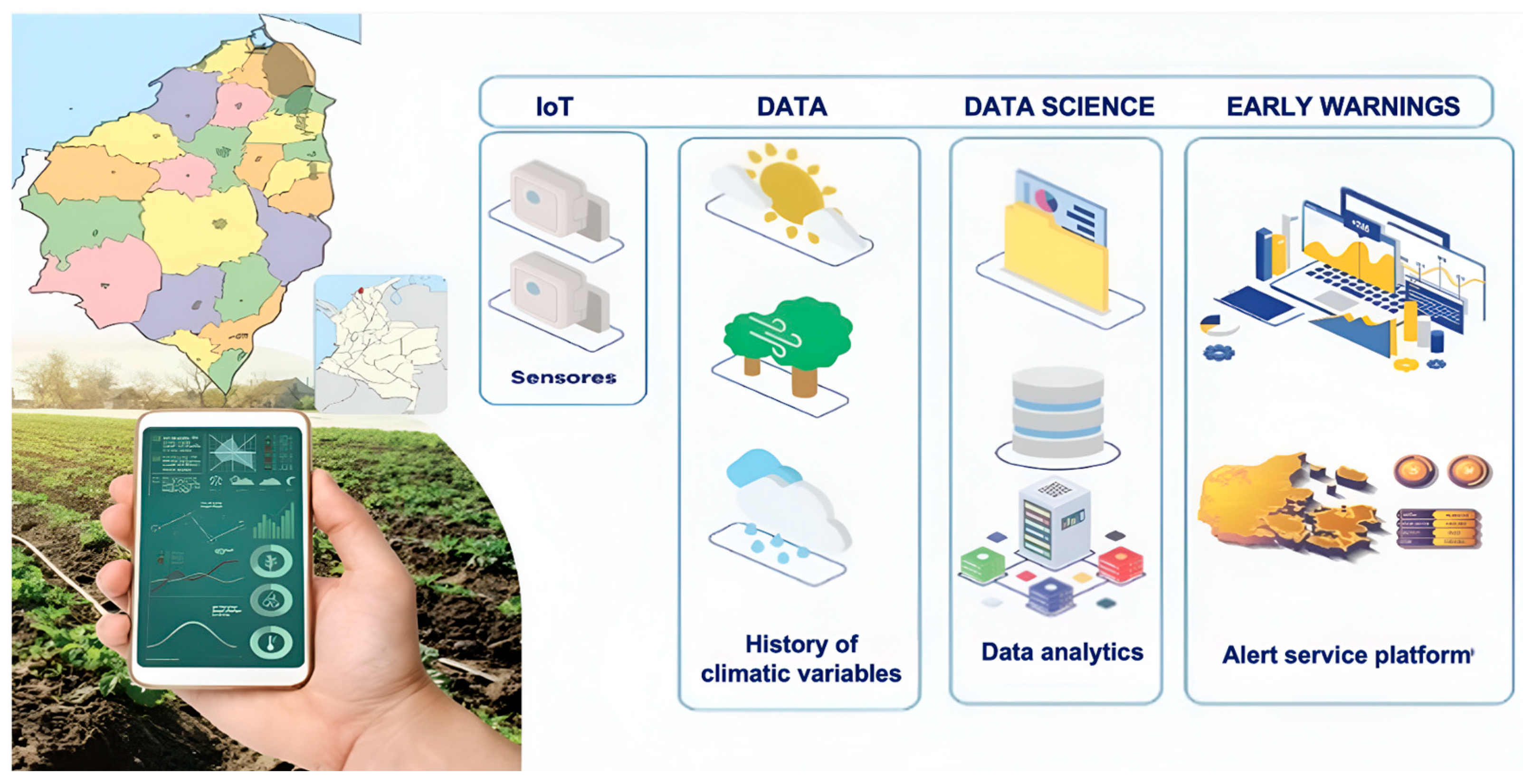
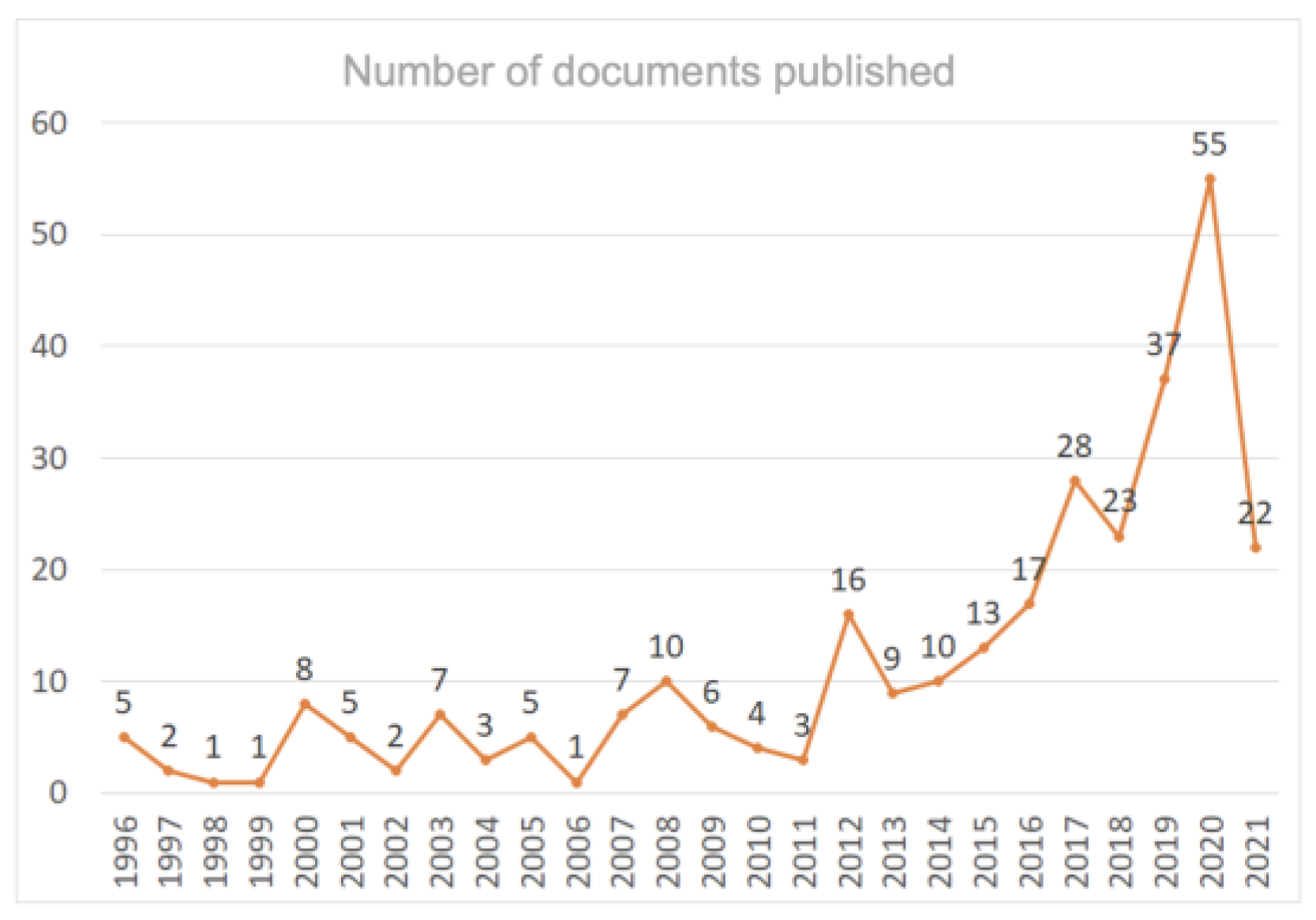
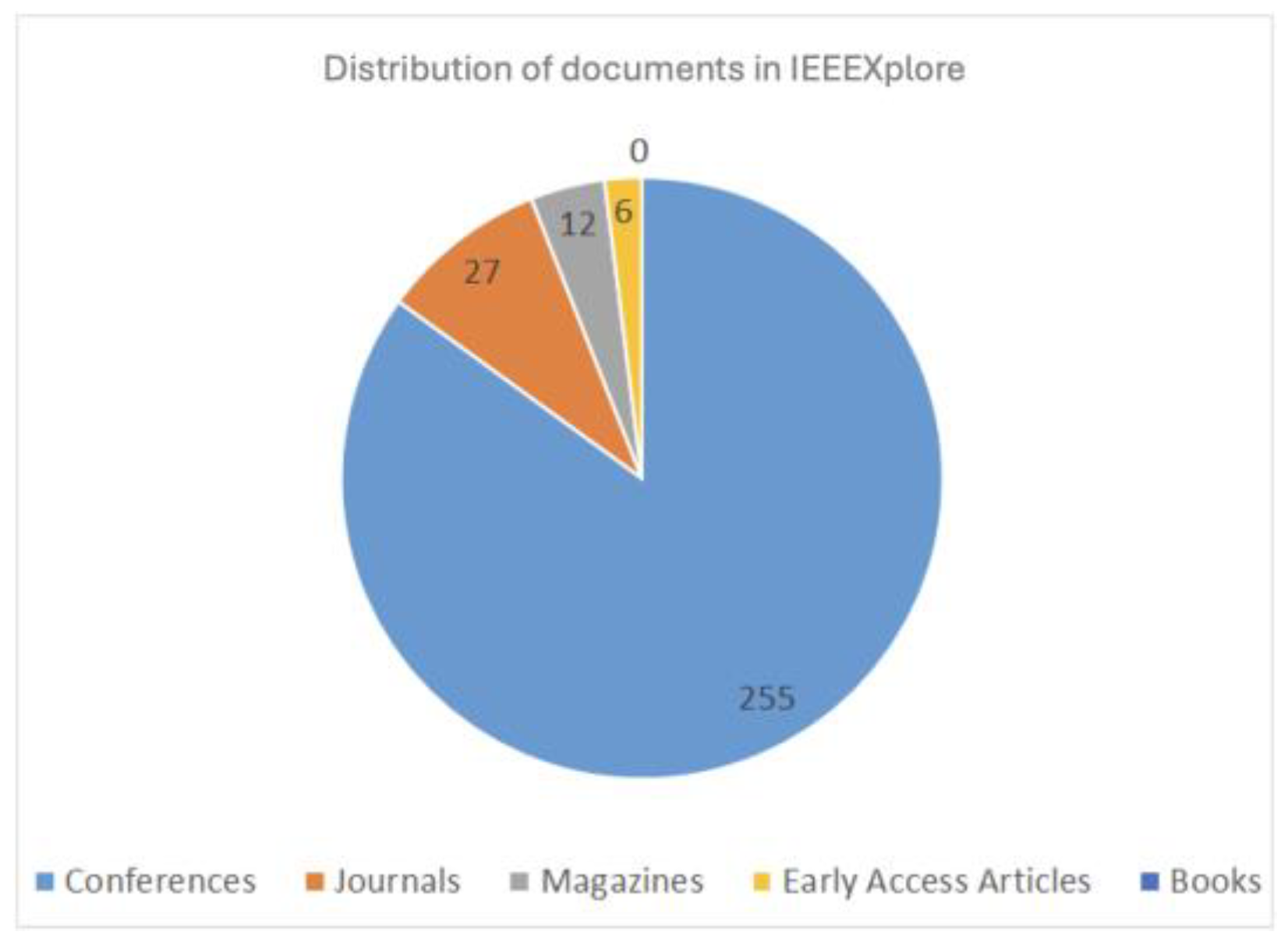
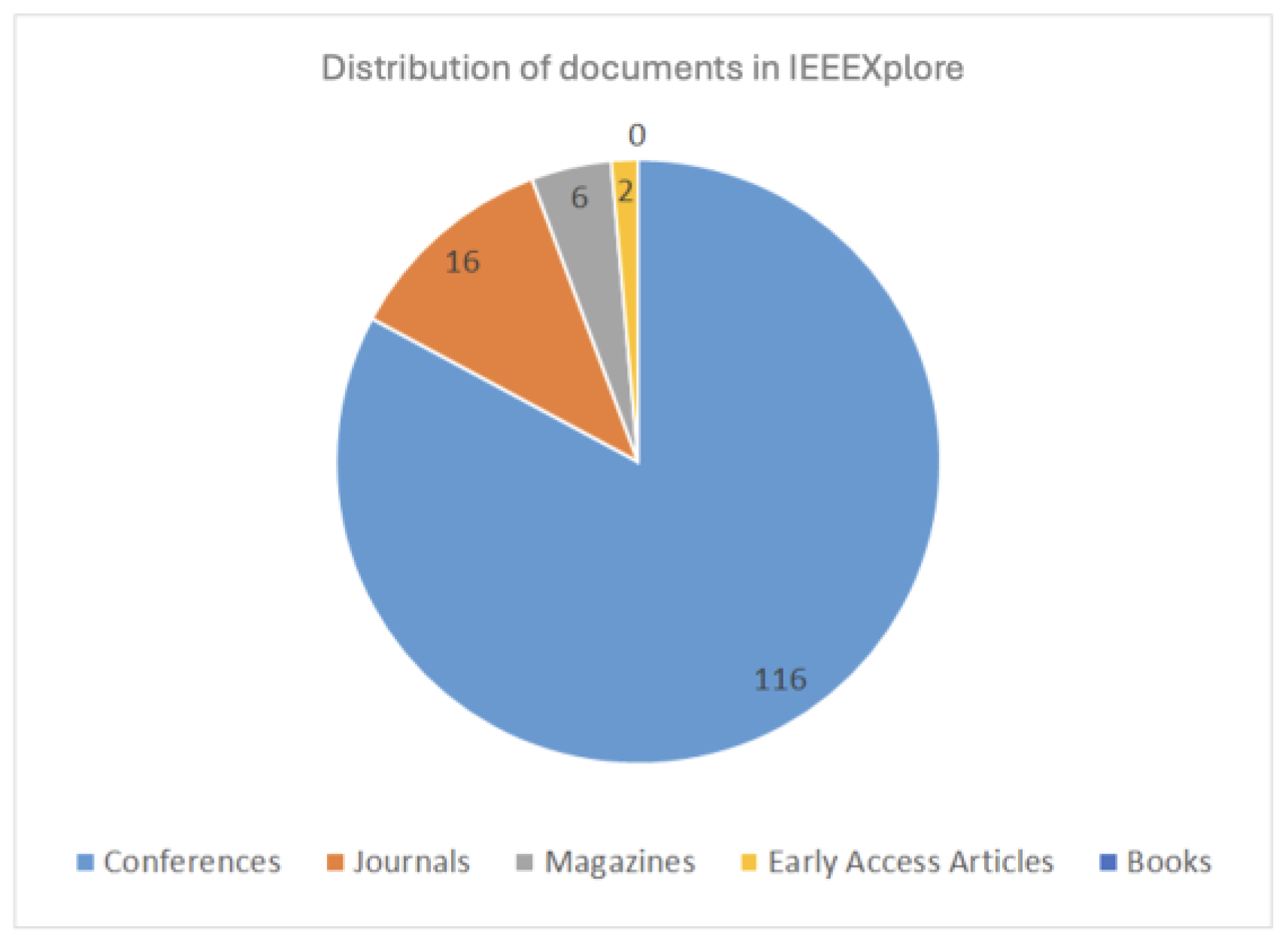
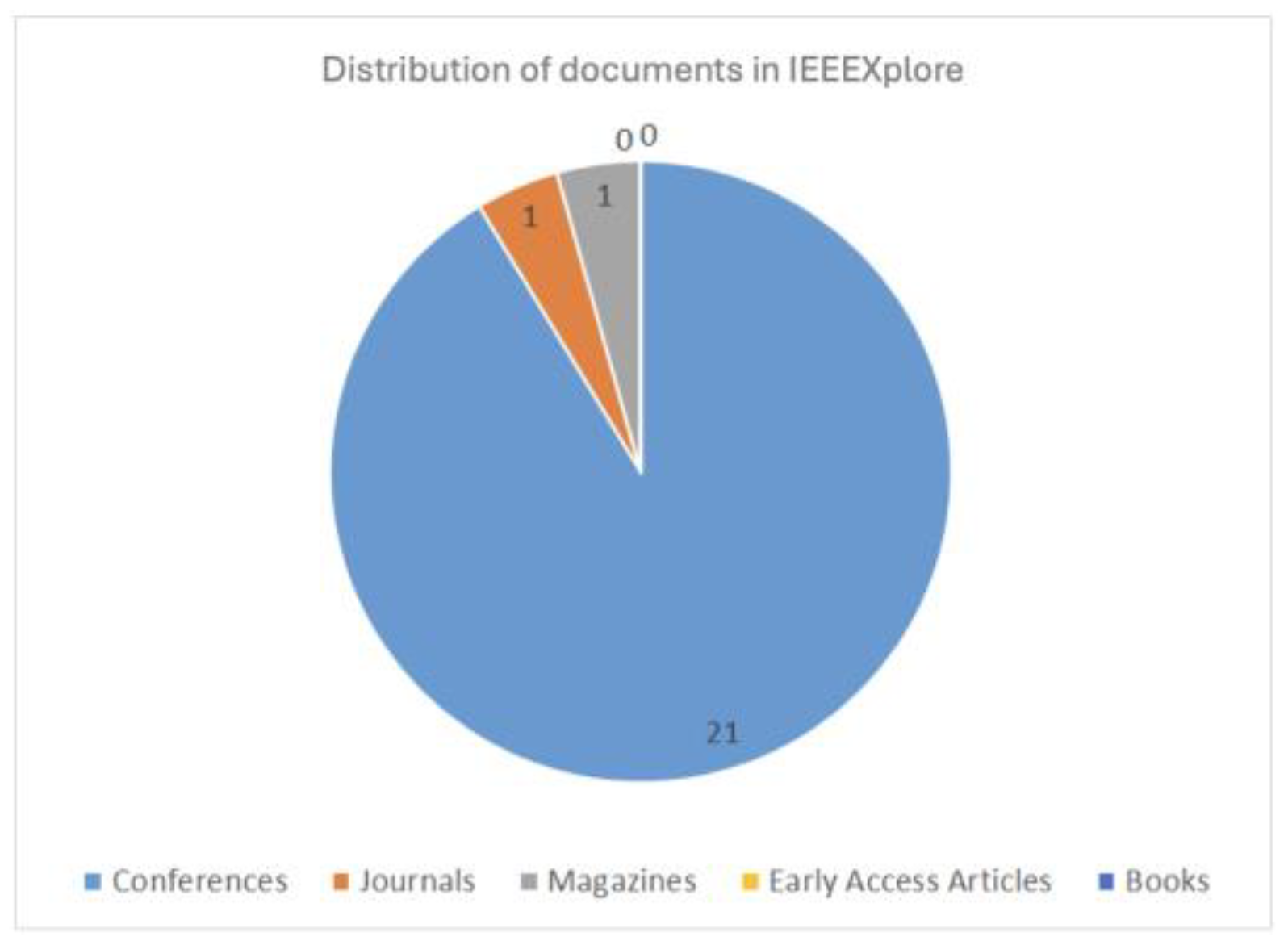
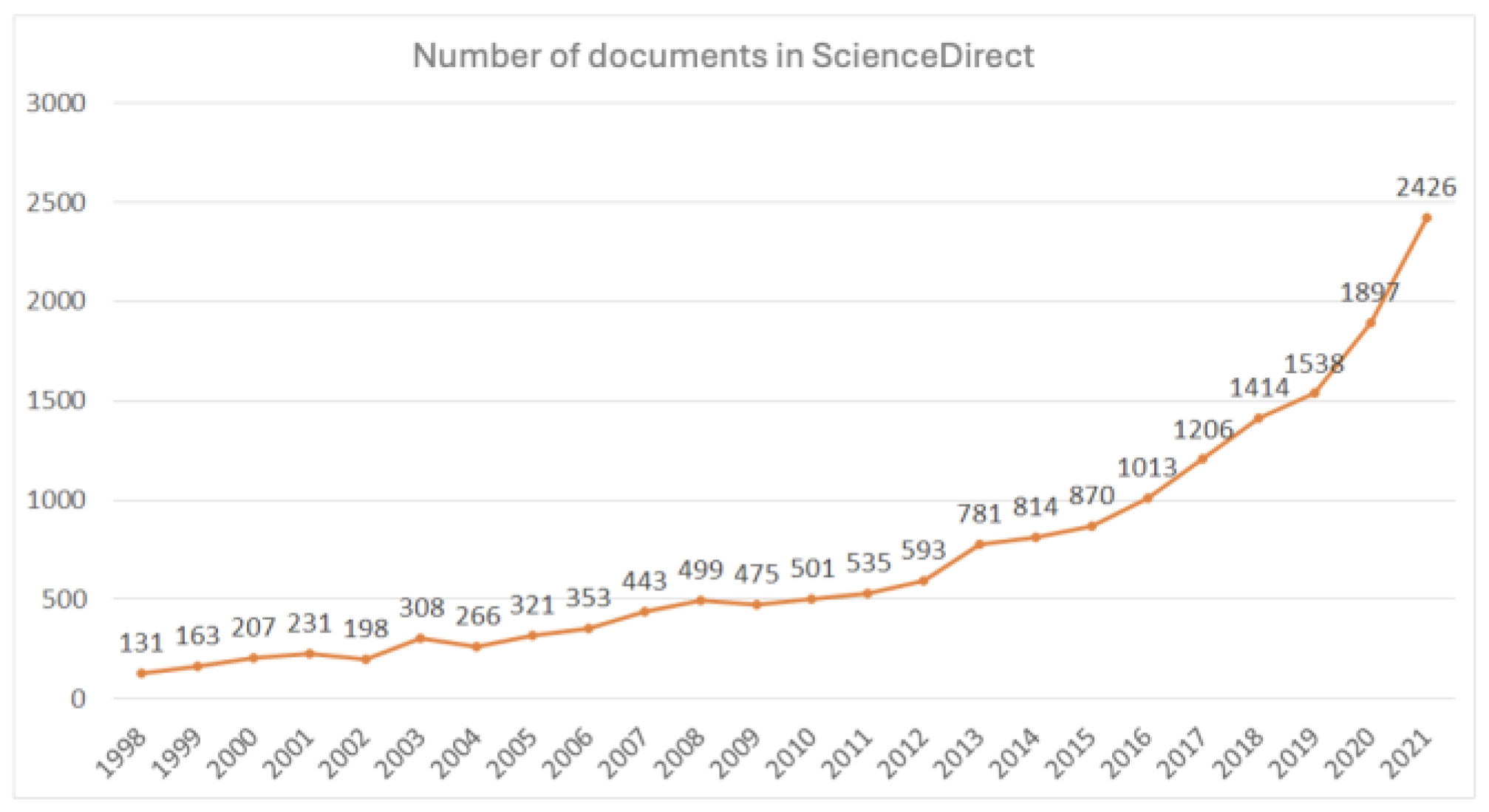
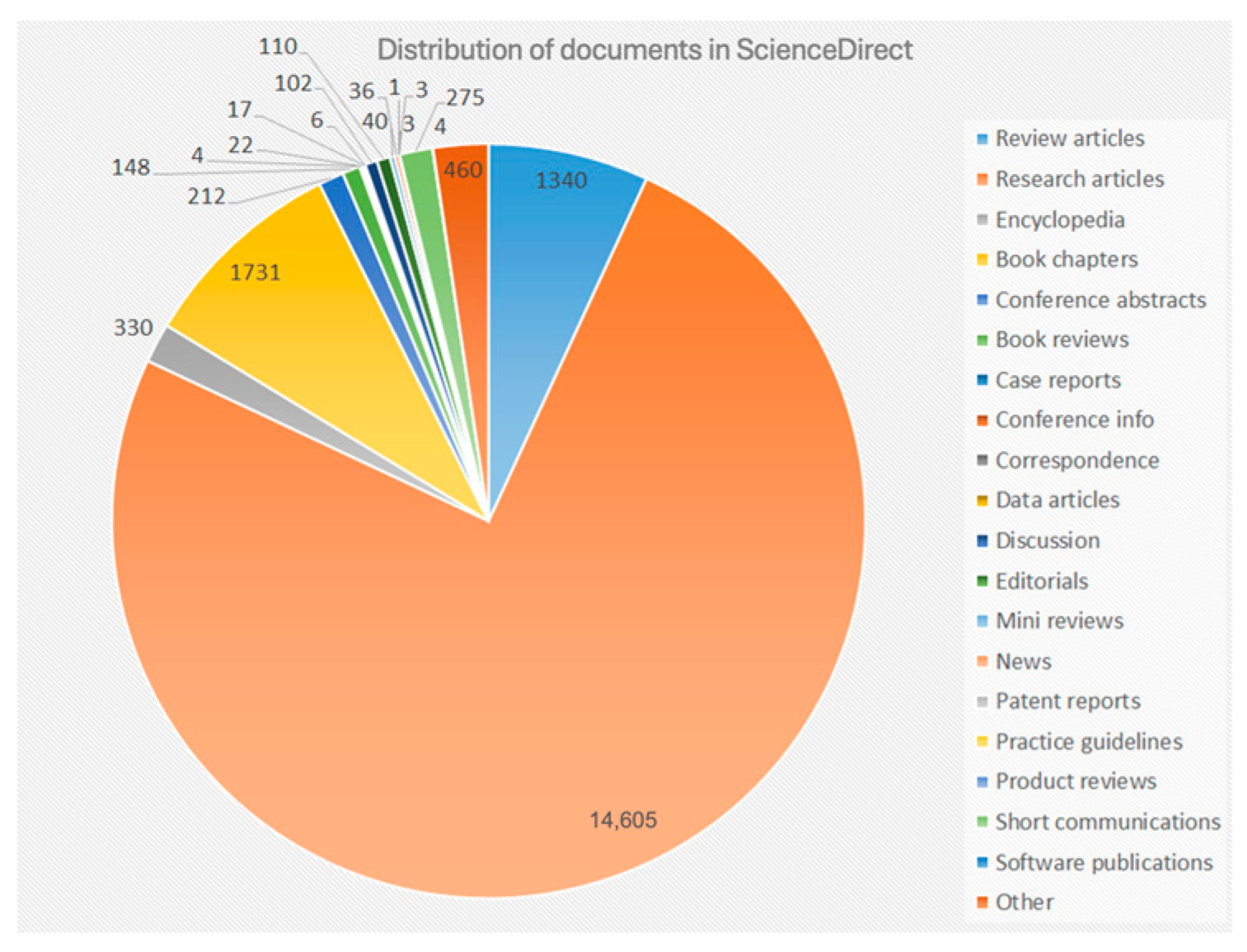

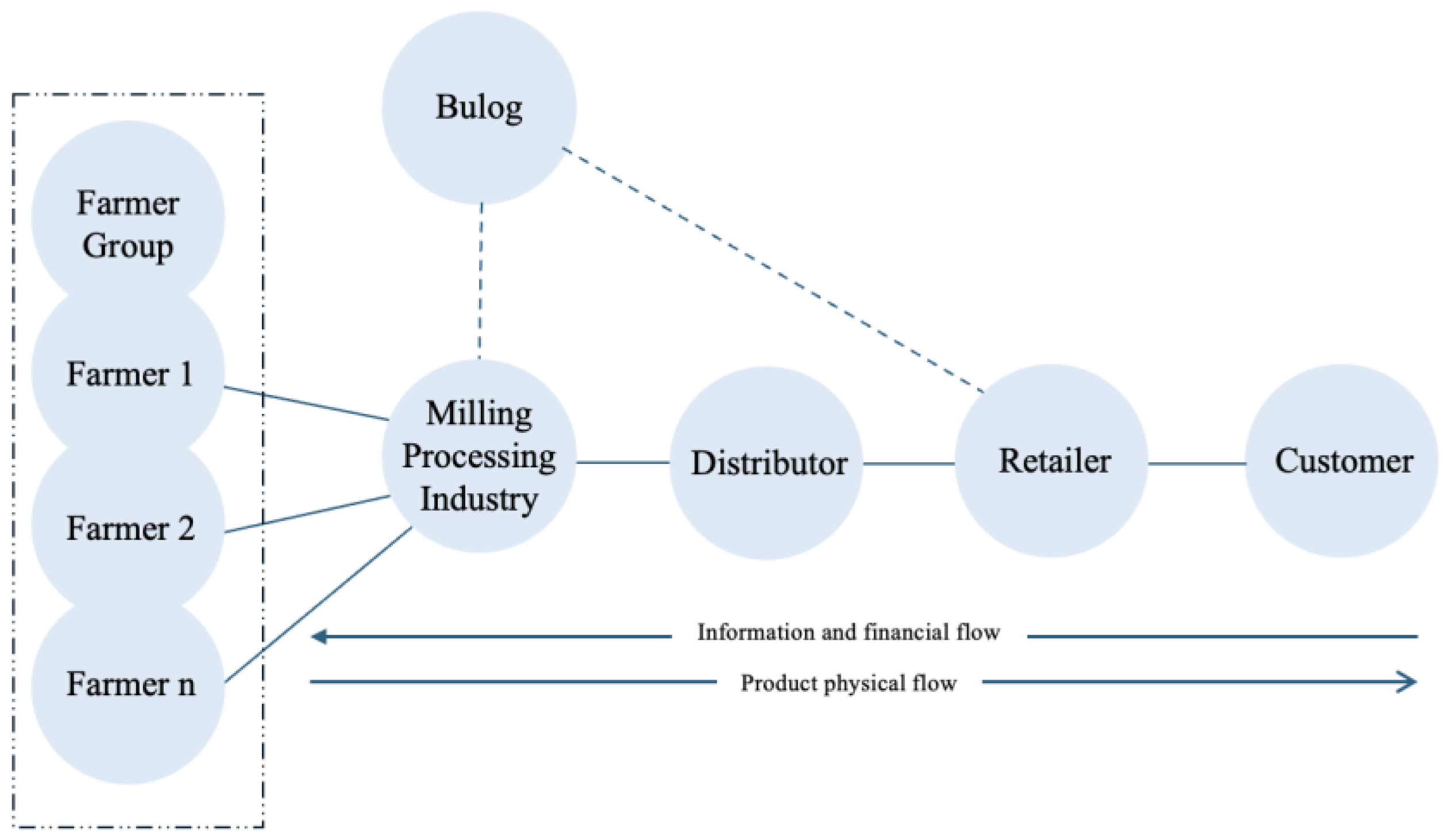


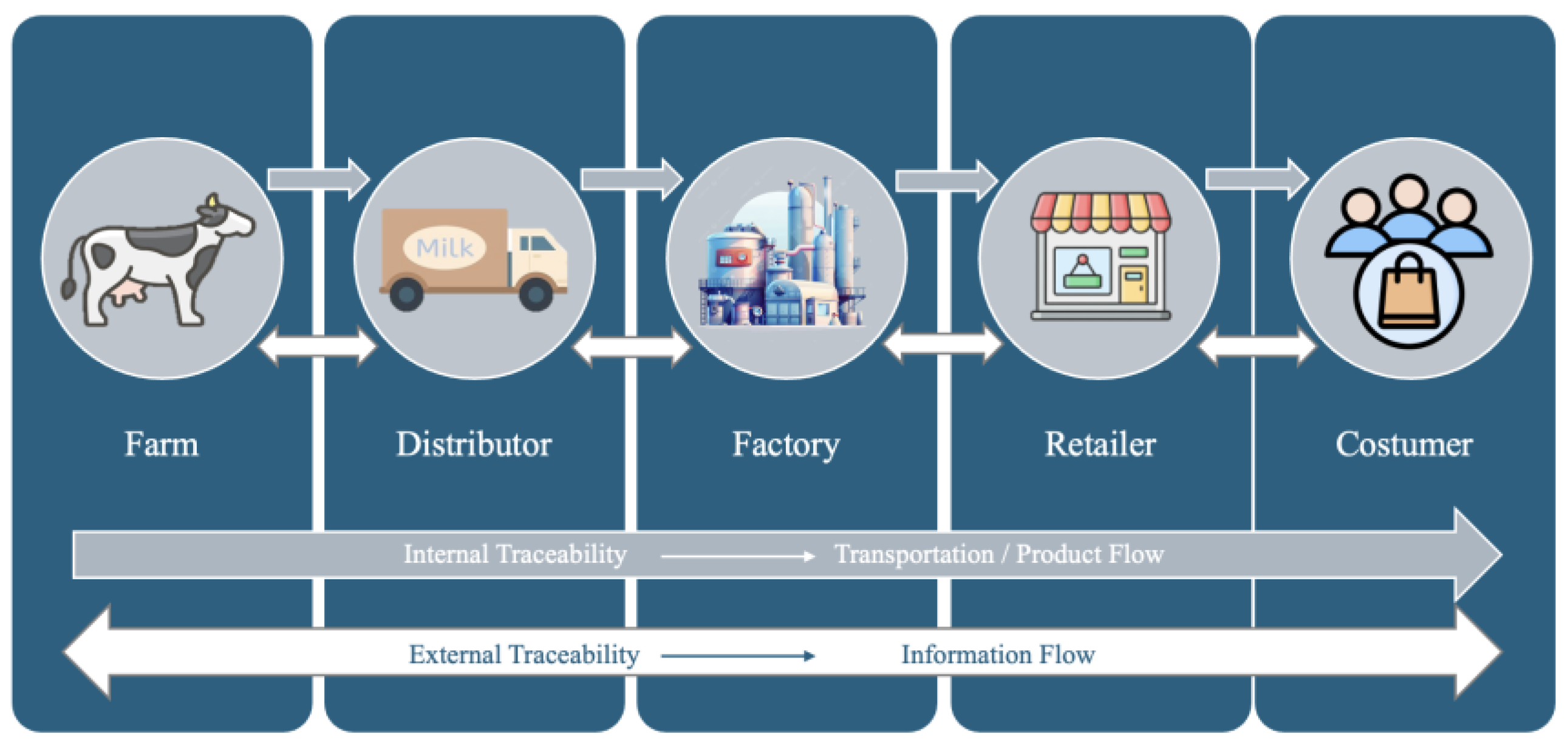
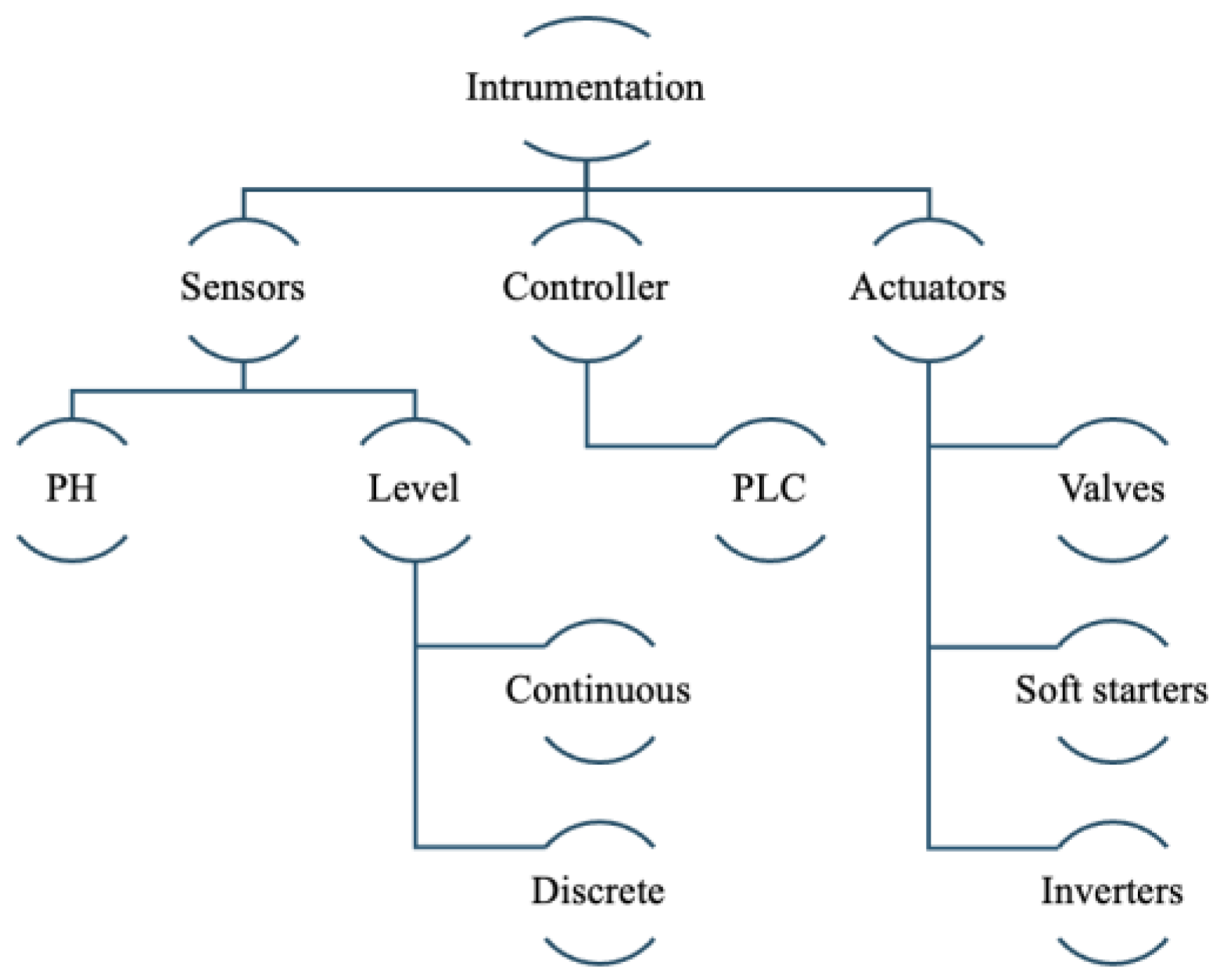
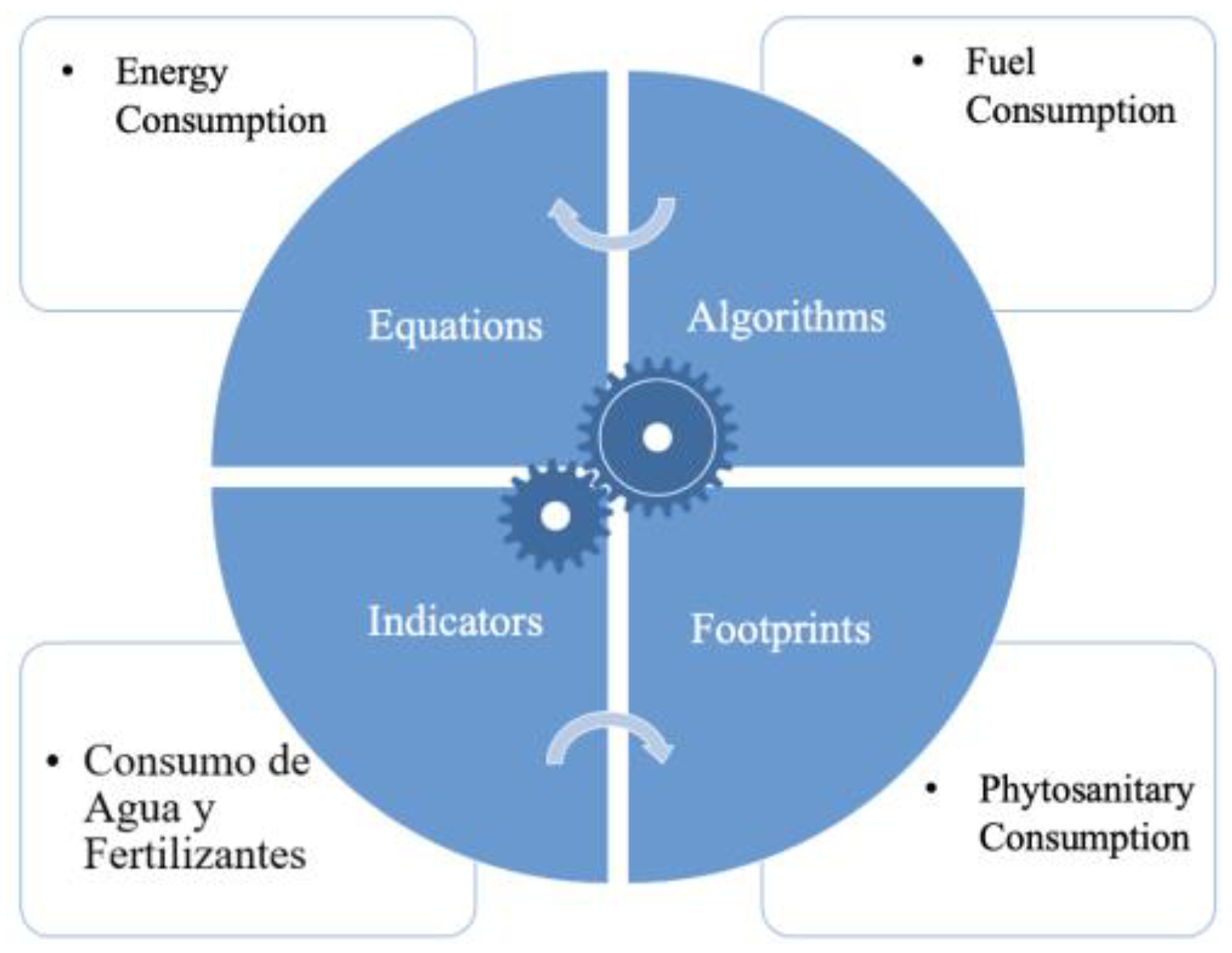
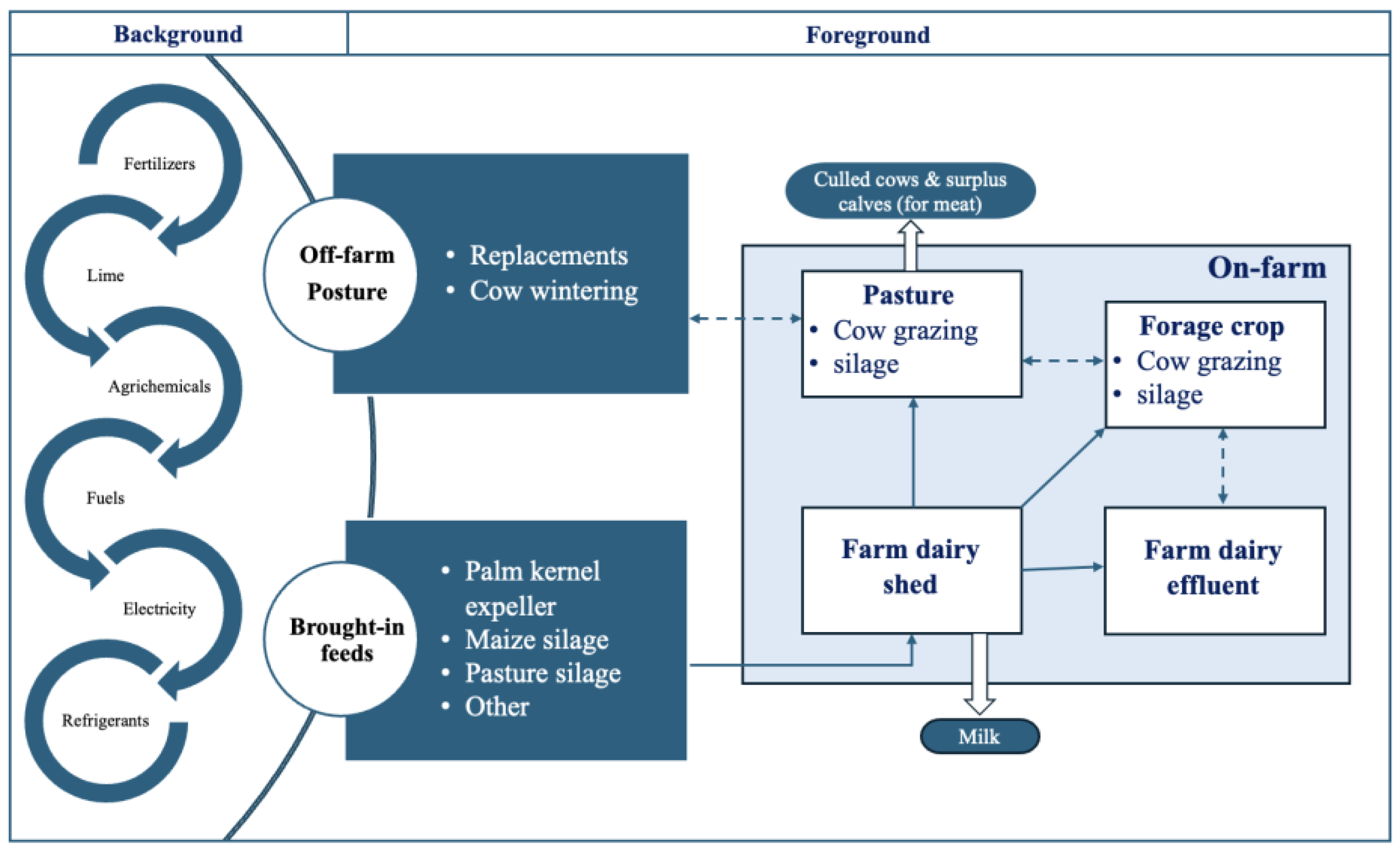
| Criterion | Inclusion | Exclusion |
|---|---|---|
| Language | English and Spanish | Other languages |
| Type of source | Peer-reviewed journal articles, academic books, and technical reports from recognized institutions (e.g., ministries, FAO, CIAT) | Blogs, forums, news articles, non-peer-reviewed or unauthored documents |
| Accessibility | Full-text availability (via institutional subscription or open access) | Documents with only abstract available |
| Thematic focus | ICT applications in precision agriculture | General ICT topics not related to agriculture |
| Geographic relevance | Global, with emphasis on Latin America and Colombia | Regions not comparable to Colombia or without agricultural application |
| Publication year | 2000–2024 | Publications prior to 2000 |
| Region/Country | Technologies Used | Adoption Level | Supporting Infrastructure |
|---|---|---|---|
| Brazil [34] | IoT sensors, GPS-guided tractors, drones | Medium to high | 4G rural connectivity, national ag-tech programs |
| Mexico [35] | Climate-smart irrigation systems, mobile apps | Medium | Government-supported rural innovation centers |
| Kenya [11] | SMS-based weather alerts, EWSs, mobile platforms | Low to medium | Basic mobile coverage, NGO and donor support |
| Colombia [16] | EWSs (pilot), IoT (low-cost), basic data logging | Low | Limited connectivity, high hardware costs |
Disclaimer/Publisher’s Note: The statements, opinions and data contained in all publications are solely those of the individual author(s) and contributor(s) and not of MDPI and/or the editor(s). MDPI and/or the editor(s) disclaim responsibility for any injury to people or property resulting from any ideas, methods, instructions or products referred to in the content. |
© 2025 by the authors. Licensee MDPI, Basel, Switzerland. This article is an open access article distributed under the terms and conditions of the Creative Commons Attribution (CC BY) license (https://creativecommons.org/licenses/by/4.0/).
Share and Cite
Díaz, J.; Quiñonez, Y.; De-la-Hoz-Franco, E.; Butt-Aziz, S.; Mercado, T.; Salcedo, D. Information and Communication Technologies Used in Precision Agriculture: A Systematic Review. AgriEngineering 2025, 7, 167. https://doi.org/10.3390/agriengineering7060167
Díaz J, Quiñonez Y, De-la-Hoz-Franco E, Butt-Aziz S, Mercado T, Salcedo D. Information and Communication Technologies Used in Precision Agriculture: A Systematic Review. AgriEngineering. 2025; 7(6):167. https://doi.org/10.3390/agriengineering7060167
Chicago/Turabian StyleDíaz, Jorge, Yadira Quiñonez, Emiro De-la-Hoz-Franco, Shariq Butt-Aziz, Teobaldis Mercado, and Dixon Salcedo. 2025. "Information and Communication Technologies Used in Precision Agriculture: A Systematic Review" AgriEngineering 7, no. 6: 167. https://doi.org/10.3390/agriengineering7060167
APA StyleDíaz, J., Quiñonez, Y., De-la-Hoz-Franco, E., Butt-Aziz, S., Mercado, T., & Salcedo, D. (2025). Information and Communication Technologies Used in Precision Agriculture: A Systematic Review. AgriEngineering, 7(6), 167. https://doi.org/10.3390/agriengineering7060167







